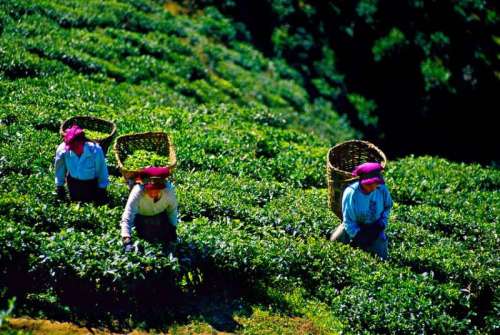 Avishek Rakshit writes on the changing demographics of Bengal’s tea estates in UK’s leading Asian newspaper Asian Lite.
Avishek Rakshit writes on the changing demographics of Bengal’s tea estates in UK’s leading Asian newspaper Asian Lite.
Even as seven tea gardens in the north Bengal hills remain closed, labour demographics in the estates producing the globally famous Darjeeling tea have begun to rapidly change with local workers migrating to other areas and states and those from Nepal and Bhutan rushing in to fill the vacuum.
“On an average, every year at least 25 percent of the tea garden workers, along with their families are quitting in search of an alternate livelihood and migrating to nearby areas and states. They are also shifting over to other industries in Gujarat and elsewhere,” Ziaur Alam, a leader of the Left-backed CITU, said.
He said the migration from “good, labourer-friendly gardens” is about 15 percent and for others, it ranges between 20 and 25 percent.
Alam, who has been extensively interacting with tea estate workers, said the migrations are primarily happening as tea workers are facing numerous problems, right from low wages to poor living conditions and lack of other benefits.
The plantation workers have been living in north Bengal for generations, tracing their lineage to their forefathers the British brought from what is now Jharkhand, Odisha, and Chhattisgarh as also Nepal. The Assamese and local populations were then reluctant to join the plantations.
While politicians, trade unions and the (owner-driven) Indian Tea Association acknowledge the migration, quantifying it remains a challenge. Asked if there has been a recent surge, Indian Tea Association general secretary Manojit Dasgupta said: “It is definitely happening, but we don’t have any visible, statistical data on this.”
West Bengal lawmaker and Congress leader Sankar Malakar, who is also a member of the (central government-run) Tea Board of India’s labour welfare committee, said there is no alternative for the workers but to seek other means of survival when faced with the conditions in the tea gardens.
“Workers leave the tea estates not only for better job opportunities. There are other reasons as well. What can they do if they don’t get the benefits as promised by the plantation owners?” Malakar said.
While the shortage of workers has become a major problem in the area, trade unions and politicians alike also pointed out the scarcity of permanent workers and a wave of daily-wage labourer migration from neighbouring Nepal and Bhutan.
“Owing to the porous border, workers from Bhutan and Nepal are entering tea estates in north Bengal and nearby areas as daily-wage labourers”, Malakar said.
Acknowledging the labour shortage in the plantations, Alok Chakraborty, leader of the Trinamool Congress-backed Trinamool Tea Plantation Workers’ Union, said the tea garden managers have started relying heavily on daily-wagers and cash-pluckers (seasonal labourers) as this doesn’t carry any liability for the management.
“Whereas the optimal requirement for permanent workers is one per acre, at present it is anywhere between three-five acres per worker,” Chakraborty said.
Since 1998, labourers from Nepal have been crossing the border daily to enter the tea-gardens for their livelihood, he added.
“In recent times, the migration has increased manifold. But there is no data on this. They come in the morning and cross over to the other side of the border in the evening,” he said, adding: “The need of the hour is to increase the strength of permanent workers and address problems with workers’ housing and health. There has to be at least one hospital every 8-10 km.”
McLeod Russel, one of the largest tea companies, refused to comment on the issue.
“I don’t want to say anything on this,” Kamal Baheti, a company director, said.
While most stakeholders contacted on the issue agreed to the changing labour profile in the tea gardens, the unavailability of statistical data and the unofficial status of daily cross-border migration seem to be the reasons for the issue not coming into focus that much.
According to the Indian Tea Association, from January to December 2014, the 270 gardens from Terai, Dooars and Darjeeling in north Bengal produced 329.31 million kilos of tea, up by 16.43 percent from 2013.